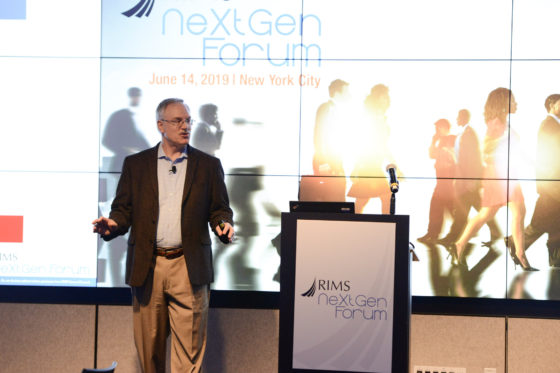All too often, IT and risk management professionals seem to be speaking a different language—that is, if they even speak at all. Bridging the Digital Risk Gap, the new report jointly authored by the RIMS, the risk management society®, and ISACA®, promotes understanding, collaboration and communication between these professionals to get the most out of their organizations’ technological investments.
Digital enterprise strategy and execution are emerging as essential horizontal competencies to support business objectives. No longer the sole purview of technical experts, cybersecurity risks and opportunities are now a core component of a business risk portfolio.
Strong collaboration between IT and risk management professionals facilitates strategic alignment of resources and promotes the creation of value across an enterprise.
ISACA’s Risk IT Framework acknowledges and integrates the interaction between the two professional groups by embedding IT practices within enterprise risk management, enabling an organization to secure optimal risk-adjusted return. In viewing digital risk through an enterprise lens, organizations can better realize a broader operational impact and spur improvements in decision-making, collaboration and accountability. In order to achieve optimal value, however, risk management should be a part of technology implementation from a project’s outset and throughout its life cycle. By understanding the technology life cycle, IT and risk management professionals can identify the best opportunities for collaboration among themselves and with other important functional roles.
IT and risk management professionals both employ various tools and strategies to help manage risk. Although the methodologies used by the two groups differ, they are generally designed to achieve similar results. Generally, practitioners from both professions start with a baseline of business objectives and the establishment of context to enable the application of risk-based decision making. By integrating frameworks (such as the NIST Cybersecurity framework and the ANSI RA.1 risk assessment standard), roles and assessment methods, IT and risk management professionals can better coordinate their efforts to address threats and create value.
For example, better coordination of risk assessments allows organizations to improve performance by identifying a broader range of risks and potential mitigations, and ensures that operations are proceeding within acceptable risk tolerances.
It also provides a clearer, more informed picture of an enterprise’s risks, which can help an organization’s board as they make IT funding decisions, along with other business investments. Leveraging the respective assessment techniques also leads to more informed underwriting—and thus improves pricing of insurance programs, terms of coverage, products and services.
Overall, developing clear, common language and mutual understanding can serve as a strong bridge to unite the cultures, bring these two areas together and create significant value along the way.
The report is currently available to RIMS and ISACA members through their respective websites. The report can be downloaded through the RIMS Risk Knowledge library by clicking here or from ISACA at www.isaca.org/digital-risk-gap. For more information about RIMS and to learn about other RIMS publications, educational opportunities, conferences and resources, visit www.RIMS.org. To learn more about ISACA and its resources, visit www.isaca.org.



